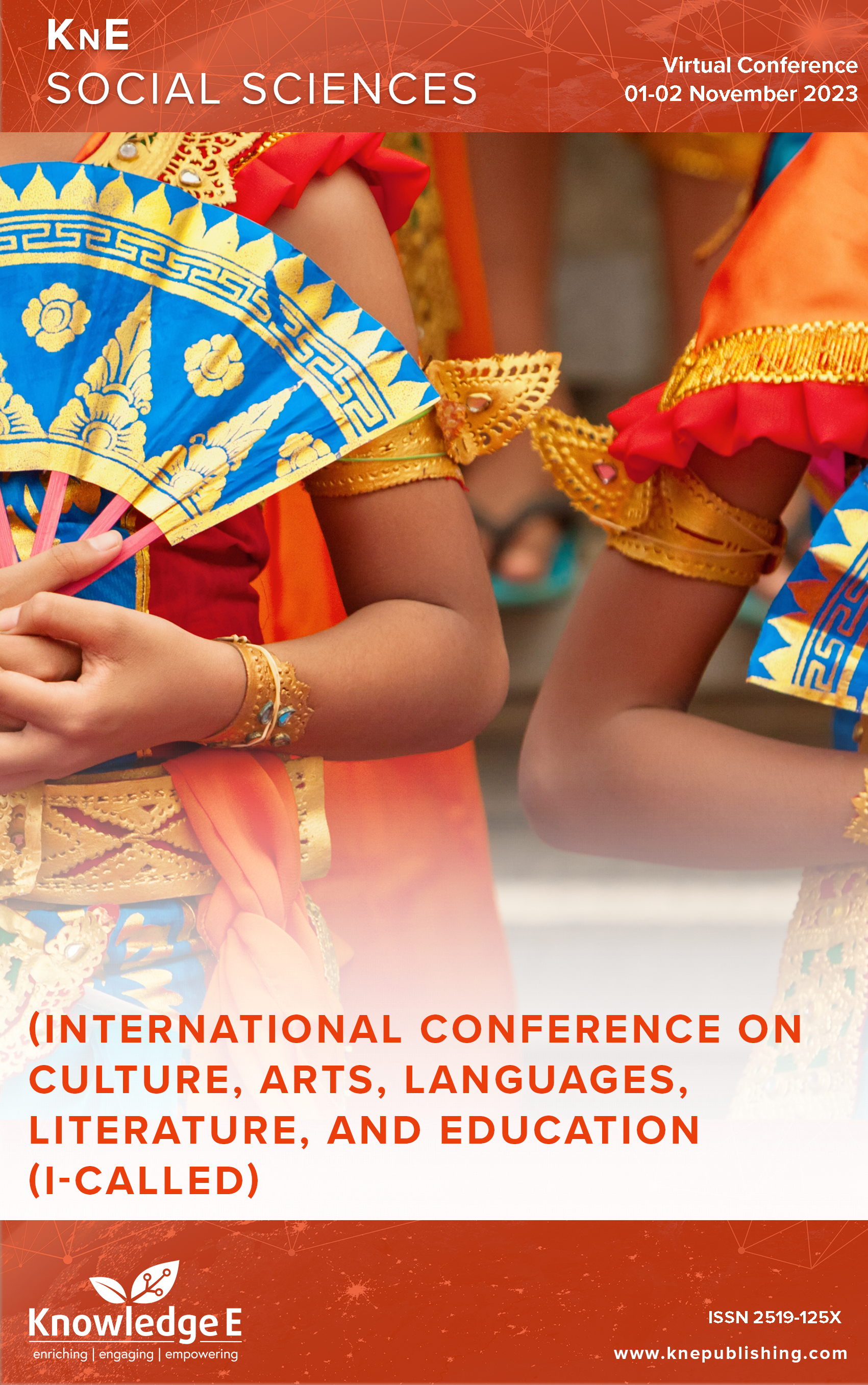The Effectiveness of Hypnoteaching Method in Improving Students Mandarin Learning Activities at the Dharma Bunda Kasih Indonesia Foundation
DOI:
https://doi.org/10.18502/kss.v9i9.15647Abstract
In the learning process, teacher as an educator is required to design and implement specific teaching methods to improve learning outcomes. This research aims to assess the effectiveness of implementing the hypnoteaching method in enhancing Mandarin language learning activities for students at the Dharma Bunda Kasih Indonesia Foundation. The research method employed is a combination of sequential exploratory methods characterized by its research focus. The findings indicate that the hypnoteaching method can be used by teachers to create an effective and enjoyable learning environment. The effectiveness of this teaching method is demonstrated by the results of the semester II exams in the XI grade at the Dharma Bunda Kasih Indonesia Foundation, where the average score of all students was 87. Additionally, it was known from the average score that students’ absorption of learning material was 87%. The calculations shows that the average student scores fall within the 86-100 range in the conversion of learning effectiveness, categorized as ’Very Effective.’ Therefore, the data on student learning outcome calculations indicate that the implementation of the hypnoteaching teaching method is effective in improving students’ learning activities. Based on T-test analysis, it can be concluded that learning with the hypnoteaching method yields better results compared to direct learning.
Keywords: hypnoteaching, learning activities, Mandarin
References
Sardiman AM. Interaksi & motivasi belajar mengajar [Interaction & motivation for teaching and learning]. Jakarta : RajaGrafindo Persada; 2012.
Karim A. Efektivitas partisipasi perempuan pada pendidikan non formal di pusat kegiatan belajar masyarakat (PKBM) Kecamatan Wedarijaksa Kabupaten Pati [The effectiveness of women’s participation in non-formal education at the community learning activity center (PKBM) in Wedarijaksa District, Pati Regency]. INFERENSI: Jurnal Penelitian Sosial Keagamaan. 2017;11(1):119-140. https://doi.org/10.18326/infsl3.v11i1.119-140 DOI: https://doi.org/10.18326/infsl3.v11i1.119-140
Wiguna IDAA. Efektivitas penerapan metode hypnoteaching dalam meningkatkan aktivitas belajar siswa [The effectiveness of applying hypnoteaching methods in increasing student learning activities]. PEMBELAJAR: Jurnal Ilmu Pendidikan, Keguruan, dan Pembelajaran. 2020;4(2):66-74. https://doi.org/10.26858/pembelajar.v4i2.13006 DOI: https://doi.org/10.26858/pembelajar.v4i2.13006
Dinasty A, Suryawan IPP, Sugiarta IM. Efektivitas penerapan metode hypnoteaching terhadap motivasi belajar matematika siswa SMP [The effectiveness of applying the hypnoteaching method to the mathematics learning motivation of junior high school students]. Prisma. 2021;10(1):30-43. http://dx.doi.org/10.35194/jp.v10i1.1302 DOI: https://doi.org/10.35194/jp.v10i1.1302
Navis AA. Hypnoteaching: Revolusi gaya mengajar untuk melejitkan prestasi siswa [Hypnoteaching: A teaching style revolution to boost student achievement]. Yogjakarta: Ar-Ruzz Media; 2017.
Yustisia N. Hypnoteaching: Seni ajar mengeksplorasi otak peserta didik [Hypnoteaching: The art of teaching to explore students’ brains]. Yogyakarta: Ar-Ruzz Media; 2012.
Gunawan AW. Hypnotherapy the art of subconscious restructuring. Jakarta: PT Gramedia Pustaka Utama; 2007.
Kihlstrom JF. Hypnosis. Annual Review of Psychology. 1985;36:385-418. https://doi.org/10.1146/annurev.ps.36.020185.002125 DOI: https://doi.org/10.1146/annurev.psych.36.1.385
Hamalik O. Proses belajar mengajar [Teaching and learning process]. Jakarta: Bumi Aksara; 2016.
Khairunnisa N, Sutjihati S, Retnowati R. Analisis sequential exploratory kemampuan berpikir analisis dalam pembelajaran biologi di SMA Negeri 1 Ciawi [Exploratory sequential analysis of analytical thinking skills in biology learning at SMA Negeri 1 Ciawi]. EduBiologia: Biological Science and Education Journal. 2021;1(1):68-77. http://dx.doi.org/10.30998/edubiologia.v1i1.8229 DOI: https://doi.org/10.30998/edubiologia.v1i1.8229
Sugiyono PD. Metode penelitian kuantitatif, kualitatif dan R&D [Quantitative, qualitative and R&D research methods]. Bandung: Alfabeta; 2019.

